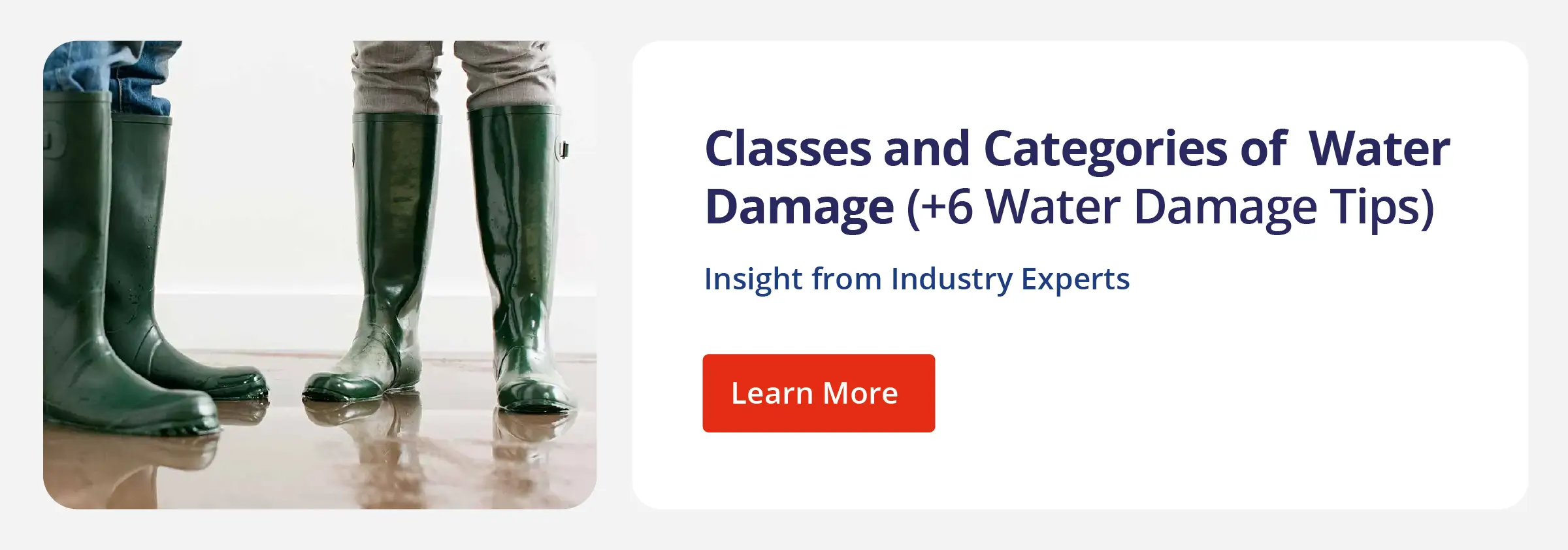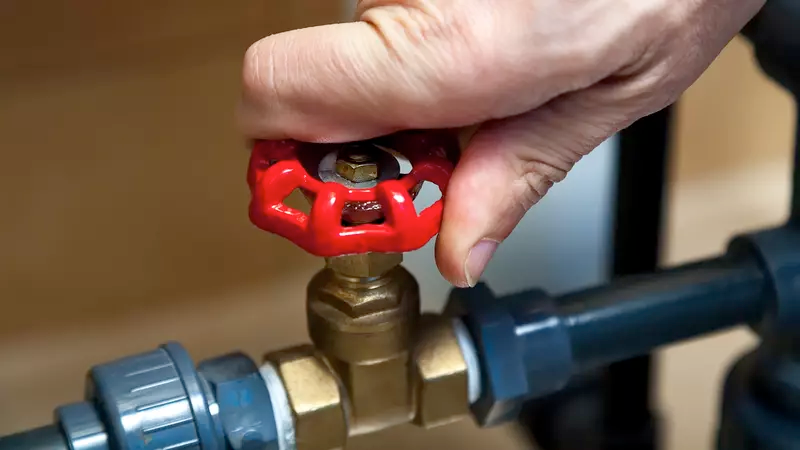
Rainbow Restoration offers a comprehensive guide to understanding your water shut-off valve, essential for home safety and maintenance.
|
Originally Published July 8, 2025
If a building is connected to city water, the main water shut-off valve is most likely in the basement or ground floor on the side of the building that faces the street. In a building with a well water connection, the main water valve is most likely near the well and pressure tank.
Learning how to shut off water flow to a home or business can prevent serious flood damage. From natural disasters to simple wear and tear, water leaks happen, causing significant water damage. In fact, water and freezing damage claims make up nearly one-quarter of all homeowner’s insurance claims annually.
The main water shut-off valve blocks water from entering a building’s plumbing system in the event of an emergency, giving you time to identify the root cause of plumbing issues. Depending on the type of building and water supply, you’ll either find the valve in the basement or the front yard.
Keep reading to learn how to find the valve, how to shut it off, and when to do this to protect your home or business in the event of a water emergency.
How To Find the Main Water Shut-off Valve
The water shut-off valve location varies depending on the building’s geographical location, water source, and type of property. Unfortunately, shut-off valves aren’t always obvious. Use the tips below to locate the water shut-off valve for your building. You may also need a pair of pliers to turn the valve and a flashlight if the valve is located in a less visible location.
Well Water Main Shut-off Valve
Here’s how to find the shut-off valve if the building uses well water:
- Locate the well and pressure tank.
- Turn the valve at the well or pressure tank, depending on which is easier to access.
- If frozen pipes are a concern, turn both valves and drain the building’s pipes.
- Run a faucet to ensure the water has been properly shut off.
Wells usually have two main shut-off valves: a valve from the well to the pressure tank and another valve from the pressure tank to the plumbing. If frozen pipes are a concern, drain the pipes by running all the faucets and flushing all toilets until there is no more water. Shut off both valves if you’re worried about the pipes freezing. Otherwise, shut off whichever valve is most convenient.
Pressure tanks may be in the basement, crawl space, garage, closet, or near the water heater tank if the building is built on a slab foundation. To find the pressure tank shut-off valve, look for a valve or knob near the tank. The shut-off valve is usually connected to the same pipe that has the pressure gauge on it.
If a building uses well water, the well is usually located near the pressure tank but may be outside in a small well house or elsewhere. The well shut-off valve should be near the well or even in a small utility box buried in the ground near the well. If there are multiple valves, only turn one at a time, and then check a faucet to see if it worked.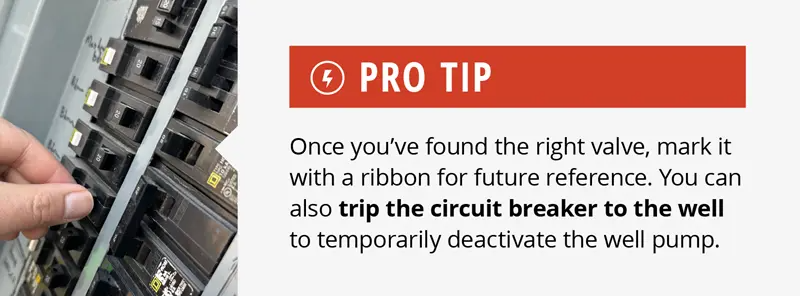
City Water Main Shut-off Valve
Here’s how to find the shut-off valve if the building has city water:
- Locate the area of the basement or lowest level of a building that faces the street.
- If pipes are visible, follow the largest one to the plumbing manifold, where you’ll find the shut-off valve.
- In other instances the water main shut-off valve will be located at or near the front of the home or business, close to the sidewalk. It is typically encased in a plastic box below the surface. Once you locate the valve, use a pair of pliers to turn the valve perpendicular to the water main pipe.
- If this fails, the property inspection report should contain the location of the valve.
In colder climates, this valve is usually located in a building’s utility room, along with the furnace or water heater. The main shut-off valve should be on the largest water pipe in this area. Look for pipes that lead directly from the foundation toward the street.
In warmer climates, you may find the shut-off valve in a plastic or concrete utility box in the ground toward the front of the building near the street. The valve may be covered in dirt if it hasn’t been used in a while. It’s best to remove this dirt now before there’s an emergency.
Still can’t find the valve? Try calling a plumber, who shouldn’t have an issue finding it for you.
Once you’ve shut off the main valve, use a water meter to double-check you did it properly. The meter box should be in the yard with a top flush to the ground labeled “water” or “water meter.”
You can open it with a screwdriver and read the meter inside. Whether it's digital or analog, if the main is turned off, then the meter should stop running. If you’re positive you’ve correctly shut off the main but the meter is running, you likely have a water leak.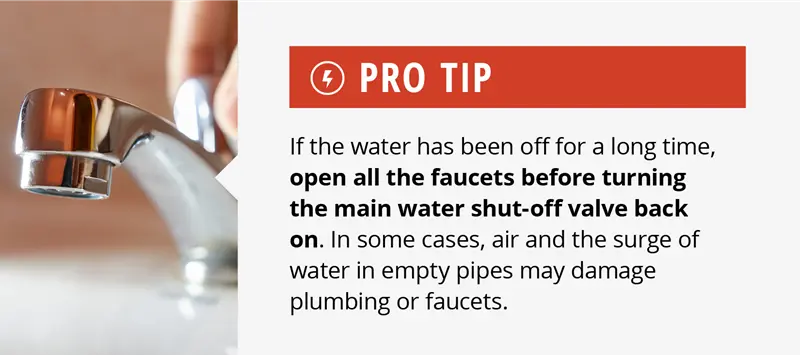
How To Shut Off Your Main Water Valve
Once you locate the valve, use your hands or the meter key to turn off the water supply. This will depend on the type of valve. We’ll cover exactly what to do below.
1. Locate the Water Valve
If the building is connected to city water, the water valve is most likely in the basement or ground floor on the side of the building that faces the street. In a building with a well water connection, the main water valve is most likely near the well and pressure tank.
2. Secure a Meter Key if Necessary
Sometimes main water shut-off valves require a meter key. You can purchase one at your local home improvement store or use a crescent wrench and a screwdriver. If you have difficulty turning the valve off and on by hand, this could be a sign you need a meter key.
3. Turn the Valve
Turning the valve clockwise will shut off water flow. Turning the valve counterclockwise will let water loose, restoring its flow through the building.
A few of the most common valves include:
- Ball valves: a switchlike valve that must be rotated 90 degrees to turn on or off the water main
- Gate valves: a wheeled valve resembling an outside faucet that must be turned to the right (clockwise) to turn off the water main and to the left (counterclockwise) to turn it back on
- Globe valves: a wheeled valve resembling a steering wheel that must be turned to the right (clockwise) to turn off the water main and to the left (counterclockwise) to turn it back on
- Supply stop valves: a wheeled valve with an oval that must be turned to the right (clockwise) to turn off the water main and to the left (counterclockwise) to turn it back on
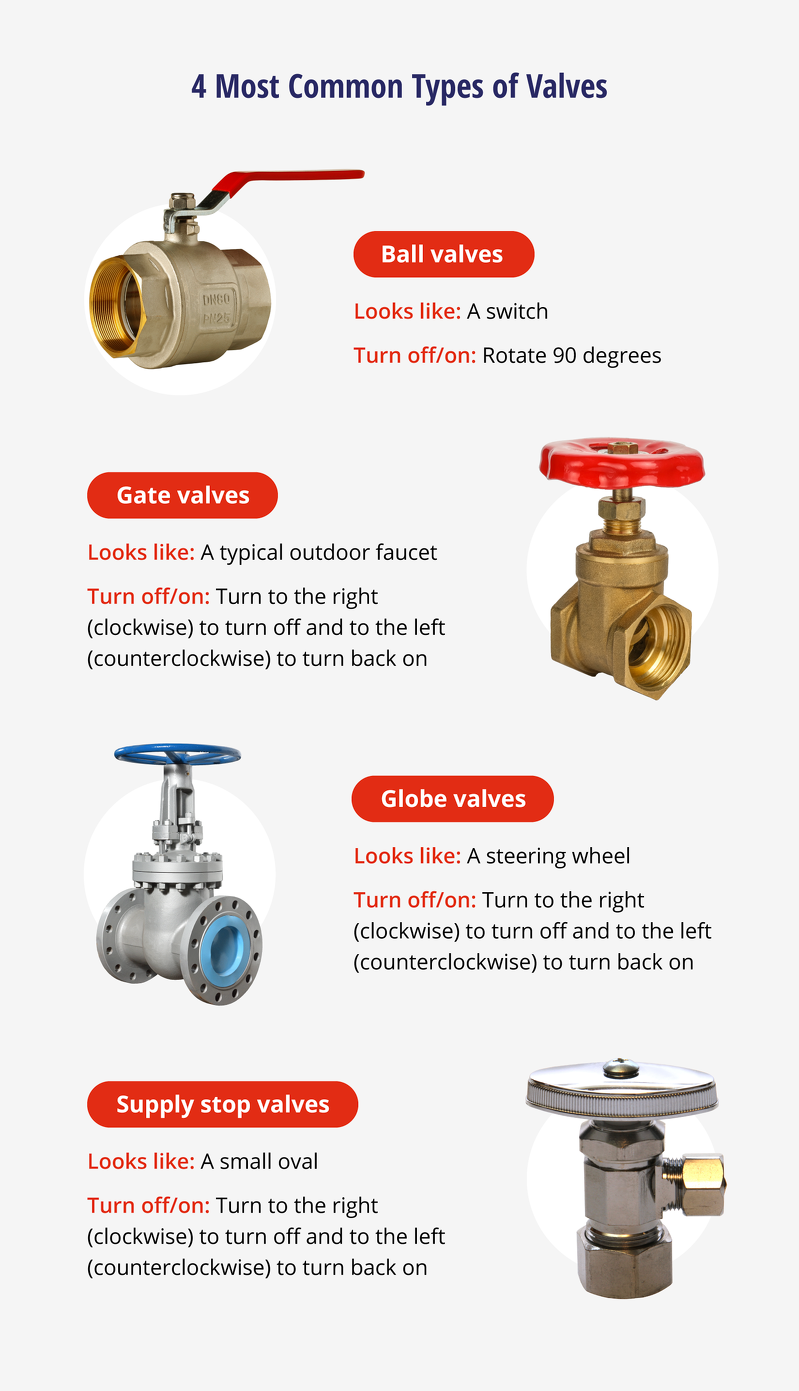
4. Release the Remaining Water Pressure
If you turn off the main water line, you’ll also need to release pressure from the pipes. You can do this by running all the faucets on hot and cold and flushing the toilets until the water is no longer running.
How To Turn Off Water Flowing to Fixtures
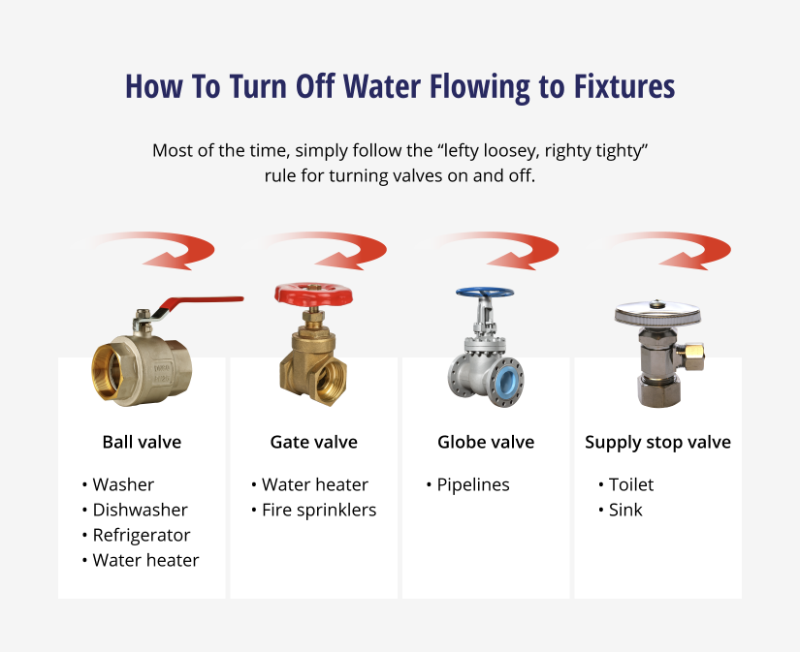
Isolation valves control the flow of water to a particular fixture or section of a building. You’re likely familiar with the valves under the sink that can shut off the water supply to just that sink. Your system also probably has valves that shut off water to rooms or floors of the building.
If you can isolate a leaky appliance — such as an overflowing dishwasher — it can be helpful to only shut off that fixture to keep your property running. Here’s how to find isolation shut-off valves in these common problem areas:
1. Toilets:
These valves top the “most commonly used” list and are nearly always located right under the toilet tank. Look for the oval-shaped supply stop valve and follow the “lefty loosey, righty tighty” rule for turning it on and off.
2. Sinks:
Sink valves are typically located just under the sink, toward the rear, and near the bottom of the cabinet. These typically use supply stop valves, too.
3. Washer:
Washer shut-off valves are typically just behind or above the washer, with one each for hot and cold supply lines. Washers typically use ball valves.
4. Dishwasher:
To find the dishwasher shut-off valve, look for a second valve on the hot water supply line (the one under the kitchen sink) that has a horizontal pipe leading away from it. This appliance typically uses ball valves.
5. Refrigerator:
For refrigerators, a ball valve is usually located at the wall at the back of the refrigerator — sometimes hidden in a panel. If you’re unable to locate the valve, check the attic/basement ceiling directly above or below the appliance.
6. Water Heater:
Locate the water shut-off valve a few inches above the top of the heater. The main water line often goes directly toward the water heater, so if you’ve located the main water line, you can find the water heater valve that way. If you’re turning off the water supply, you should also turn off the water heater itself. Water heaters typically use gate or ball valves.
7. Fire Sprinklers:
If the building has a fire sprinkler system, you’ll need to take extra care when selecting the shut-off valve.
- Fire sprinklers + inside main water meter: Aim for the second valve, above and downstream from the fire sprinkler tee.
- Fire sprinklers + outside main water meter: Turn off the second valve, downstream from the fire sprinkler tee.
- No sprinklers + inside main water meter: Either valve will shut off water flow, but using the second is best in case you aren’t sure if your property has sprinklers.
- No sprinklers + outside main water meter: Typically, there will be only one shut-off valve.
FAQ About Water Shut-Off Valves
Is There More Than One Main Water Shut-off Valve?
There are usually multiple shut-off valves in a property — one for each of the appliances that use water, but only one main shut-off valve for the entire building. You can usually find shut-off knobs for the toilet, sink, or washing machine behind the units or under the sink. If the toilet is about to overflow, don’t waste time by running around looking for the main water shut-off valve.
What Does a Main Water Shut-off Valve Look Like?
The main water shut-off is typically outside (around the perimeter of the property) or in the basement. The main pipe may be slightly bigger compared to other pipes, and it typically has a ball or gate valve.
Is It OK to Turn Off the Main Water Valve?
It’s safe to turn off the water main from time to time, in cases when the property will be vacant temporarily. However, doing so can cause unnecessary stress on pipes. To reduce risk, only turn off the main water valve occasionally, and be sure to turn it off and on slowly to reduce water pressure.
When Should I Turn Off the Main Water Valve?
There are two main situations where you’ll need to shut off the main water valve:
- There’s a leak or other pipe issue to repair.
- The building will be empty. In cold weather, be sure to drain the system so pipes don’t burst if you’ll be gone for a day or longer.
How Do You Replace a Main Water Shut-off Valve?
Water mains can cause costly damage and should be handled by a professional. You should always call your local plumber to ensure this task is completed safely and correctly.
What To Do After Shutting Off the Water
Once you’ve found the shut-off valve, now may be a good time to have the plumbing inspected by a professional, especially if you notice anything out of the ordinary. If the building uses well water and you notice low water pressure or a constantly running well pump, you may need a new pump.
Find Professional Water Damage Restoration Services
Water damage restoration services are essential after a flood or any water-related incident to restore properties to their best possible condition. For professional residential and commercial water damage mitigation services, call Rainbow Restoration at (855) 724-6269 or request an appointment online.
Additional Resources:
- Commercial flood and water damage remediation
- Commercial mold removal and remediation
- Residential flood and water damage restoration
- Residential mold removal and remediation
- Request an appointment online
This article is intended for general informational purposes only and may not be applicable to every situation. You are responsible for determining the proper course of action for your property. Services should be performed by licensed and experienced professionals. Rainbow Restoration is not responsible for any damages that occur as a result of this blog content or your actions. For the most accurate guidance, contact a Rainbow Restoration professional for a custom, on-site assessment.
